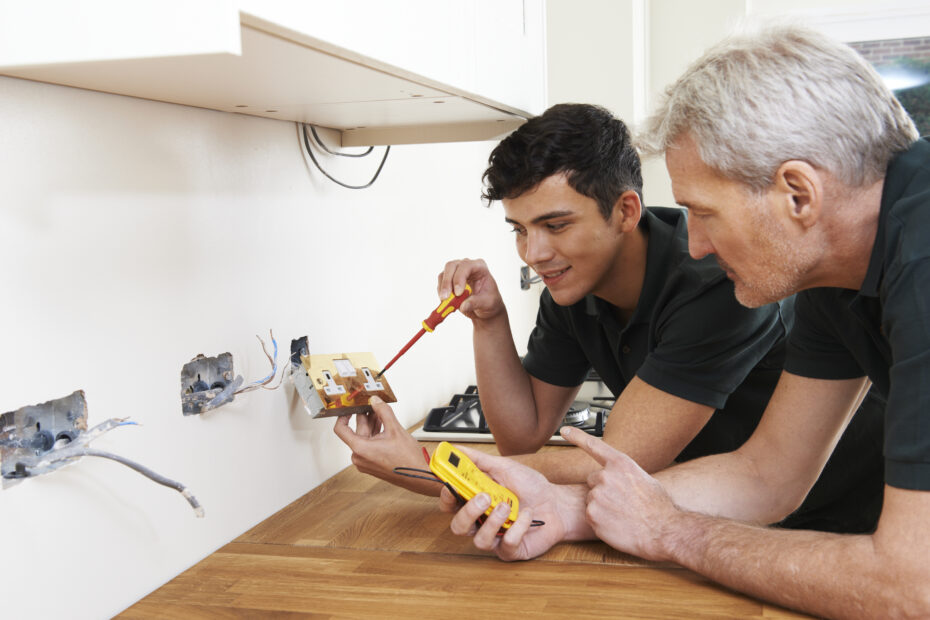Do you know what the consequences could be of electrical failures in commercial buildings. If you don’t, it’s time to find out. It is easy to make mistakes when working with electrical power in commercial buildings. This blog will address seven of the most common errors made in electrical work in commercial buildings.
Not following National Electrical Code (NEC) guidelines
This is a significant problem. The National Electrical Code, (NEC), is the code that sets the standards for electric safety within homes and commercial buildings. Yet, many people don’t follow the guidelines when they install new circuits or create wiring plans. This can cause fire hazards, by overloading outlets with excessive power consumption.
The NEC provides guidelines for building codes like these:
- Wiring installation requirements – wire sizing ensures enough wire to meet the demands of your circuit and any load it may have to carry.
- Grounding is an essential component of any building’s safety circuitry design. You run the risk of short circuits or overloads if your electrician isn’t properly grounding wires. You must also ground some features. Grounding is an essential part of any plan.
- Circuit protection- According to the NEC, all wires must be adequately insulated with materials like plastic, rubber, and porcelain. You cannot use any metal wires that aren’t coated.
Miscalculating power load
A building’s power load is the total energy it uses at any time. This includes all appliances, and lighting in your kitchen or office. Your commercial electrician will calculate this. Take into account how much power each fixture or appliance draws. It won’t likely work with an ordinary outlet if it consumes more than 100W.
If you don’t know how much power your building uses, it can result in brownouts or power shortages. To avoid this, ensure you have done the proper calculations before installing any new equipment.
Improper grounding
A dangerous problem can arise from improper grounding. A commercial electrician who doesn’t properly grounded wires could lead to short circuits and overloads. It is vital to know the characteristics of a transformer to avoid many problems. The ground wire should protect transformers from electric hazards and provide insulation to prevent direct contact with the earth potential.
Using insufficient insulation
It may seem like an obvious task, but insulation is an important part of maintaining your commercial building, businesses often overlook it. Insulation is essential in areas where temperatures can reach high levels. It helps keep the heat down and regulates moisture levels.
There are many different materials that can be used to insulate wire or cable runs. However, the most important ones should be:
- Bubble wrap insulation protects up to 600 V. Because it isn’t conducive to lower voltages, bubble wrap insulation works well. If properly used, it can also stop small leaks before they cause major problems.
- Polyurethane foam handles higher temperatures well without conducting electricity. It is also resistant to moisture vapor penetration. However, it doesn’t manage short circuits very well, so two layers is best.
- Protect your heat from the sun with mineral wool blankets, or batts made of mineral wool.
- Fiberglass can handle high-temperature ranges. However, it is not able to handle moisture very well. But it does provide some electrical protection.
You should consider the temperature range inside your building. Keep an eye on humidity levels and take note of any changes in temperature to ensure that you choose the insulation that best protects against moisture, electricity, and heat.
Insulation that is not suitable for your specific building or area is not something you want. It can cause further problems. You will avoid costly mistakes by making sure insulation is installed correctly.
Poor wiring techniques or circuitry designs
It is essential to be familiar with the different types and uses of electrical wiring in commercial buildings. Poor wiring techniques and circuitry design are common with all the technology we use these days – including Wi-Fi networks, screen displays, interactive kiosks and modern appliances such as refrigerators. This may seem complicated at first, especially if you are trying to keep track. But if you pay careful attention before installing or construction begins, these errors can be easily avoided.
Lack of safety features and caution
It is important to ensure that your building has been code-compliant and that safety precautions have been taken when wiring, installing equipment or creating a circuitry plan. Inadequate safety features can lead not only to injuries but also to fires and electrocution. Safe buildings can only be designed if you pay attention to every detail before construction starts.
A fire alarm compatible with smoke alarms must be included in any design. This is critical to ensure safety for residents and compliance with building codes. This not only ensures compliance, but also protects the people working on the site. Therefore, it is important not to move forward without taking all the necessary precautions.
Inadequately maintained equipment
Equipment that is not maintained properly can be a safety hazard for any building. However, commercial buildings pose even greater danger. A poorly maintained heating or air conditioning system can create major problems. In addition to making the environment uninhabitable, it also increases the risk of electrical fires. These problems should be avoided by performing routine maintenance checks on HVAC units at least every six months. This is especially important for facilities that use gas-fired boilers. In these cases, an outside vendor might need to inspect the facility every year.
